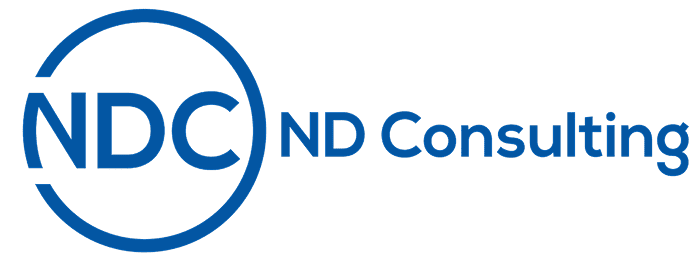Managing residential properties requires juggling leases, maintenance, accounting, and tenant relations. Without a solid system, growing operations become cumbersome, reporting gets delayed, and tenant satisfaction suffers. This is where Yardi residential solutions come in handy, offering a unified platform built specifically for multifamily and residential portfolios.
Recent industry trends make this even more relevant: according to a 2025 report, the global residential property management software market is expected to grow at a CAGR of 8.1% by 2035. Meanwhile, cloud-based deployment now holds over two-thirds of the property management software market share, demonstrating strong demand for scalable, accessible tools.
These shifts highlight how critical it is for residential operations to adopt a purpose-built, modern management platform.
Why Yardi Residential Solutions Matter More for Multifamily Operators
Residential property operations differ significantly from commercial work. Lease cycles, tenant turnover, maintenance requests, and tenant communication all demand tools tailored to multifamily workflows. Yardi residential solutions meet these needs through modules like Yardi Voyager residential module, combining lease management, maintenance, accounting, and tenant services into a cohesive system.
Because residential portfolios often include dozens or hundreds of units, data management must scale without breaking. Yardi’s cloud architecture allows property teams to access tenant and lease records, financial data, and reporting tools in real time, regardless of location. This unified access reduces data silos and enables faster, more informed decisions.
Streamlining Tenant and Lease Management
At its core, any residential system must simplify how managers handle tenants and leases. With Yardi tenant and lease management, teams can automate lease renewals, manage term changes, calculate proration, and run reports on occupancy trends. These workflows reduce manual effort and eliminate common lease-related errors.
Yardi also supports tenant portals, letting residents view their lease status, upload required documents, and make payments online. A streamlined portal experience contributes to better communication, fewer misunderstandings, and faster lease processing, which supports retention and improves the tenant experience.
Maintenance and Service Coordination
Maintenance requests are a major driver of tenant satisfaction, and a big logistical burden for management teams. Using Yardi residential solutions, maintenance and service workflows are integrated directly with the rest of the system. Technicians can receive work orders, update status, and log materials used, all tied to specific units or leases.
That level of integration matters: when maintenance is handled through the same system as leasing and accounting, managers can more easily track costs, identify recurring repair issues, and measure vendor performance. Over time, this data helps teams budget for maintenance, reduce emergency calls, and maintain higher property standards.

Financial Management for Residential Portfolios
Accounting for a residential property business involves more than just rent collection. There are security deposits, prorated charges, owner distributions, and property-level financial statements to manage. Yardi property management software for apartments supports all of that through a built-in financial engine tailored to residential needs.
With Yardi, payments from tenants automatically hit the right general ledger accounts. Deposit handling, refunds, and lease-based adjustments feed into accurate bookkeeping. This integration streamlines month-end reconciliation and improves the speed and accuracy of financial reporting.
Scaling Operations with Multifamily Housing Solutions
As your portfolio grows, systems that worked for a few buildings won’t scale well. Yardi multifamily housing solutions allow you to expand without overhauling your software or jumping to new platforms.
Because the system was built for residential scale, it supports centralized portfolio management: one dashboard for all buildings, consolidated financial reporting, and unified tenant data. When you acquire new properties, whether a handful of units or multiple complexes, your operational and accounting workflows remain consistent.
That consistency matters: according to Mordor Intelligence, operators managing between 501–5,000 units represented roughly 41% of the 2024 property management software market by revenue. A system that can handle that scale is not just helpful; it’s crucial.
Reporting, Analytics, and Decision Support
Managing residential properties without good data is risky. Yardi residential solutions include robust reporting and analytics features that let teams generate owner statements, budgeting reports, occupancy trend dashboards, and more.
Because the data lives in Yardi, reports are up-to-date and integrated. That means when managers run a variance report, they don’t need to manually combine spreadsheets; they pull it directly from the system. Real-time insights into cash flow, rent delinquencies, and maintenance costs give leadership a clearer picture of financial health and operational risks.
Implementing Residential Tools
To make the most of Yardi residential solutions, implementation matters. Here are key considerations:
1- Clean Data Migration
Before migrating resident records, leases, and unit data, cleanse and standardize the source information. Mistakes during migration lead to recurring errors, especially in reporting and accounting.
2- Workflow Mapping
Map out existing lease, maintenance, and accounting processes. Then translate those into Yardi workflows, rather than forcing teams to adapt to generic tasks.
3- User Training
Deliver role-based training. Leasing staff, maintenance technicians, accountants, and portfolio managers each use different parts of the system. Tailored onboarding improves adoption and reduces mistakes.
4- Ongoing Review
After implementation, schedule periodic reviews. Confirm that modules are being used correctly, data flows remain consistent, and reporting meets decision-makers’ current needs.
Bringing It All Together
When properly configured, Yardi residential solutions transform residential operations from fragmented to integrated. Lease management, maintenance, financials, and tenant communication all live in one system. That removes duplication, reduces errors, and speeds up workflows.
The system’s scalability makes sure that it can grow right alongside your portfolio, whether you manage one building or dozens. Meanwhile, reporting tools provide ongoing clarity, powering smarter budgeting, maintenance planning, and portfolio strategy.
Conclusion
Residential property management is complex by design. Tenants expect responsiveness, accounting demands precision, and operations must scale. Yardi residential solutions offer the tools necessary to manage all of these dimensions in a unified, efficient way.
By combining lease automation, maintenance integration, financial management, and robust reporting into one platform, property teams gain the consistency and clarity needed to serve both tenants and stakeholders. For multifamily operators looking to modernize and future-proof their operations, a tailored residential Yardi deployment represents a powerful competitive advantage.





